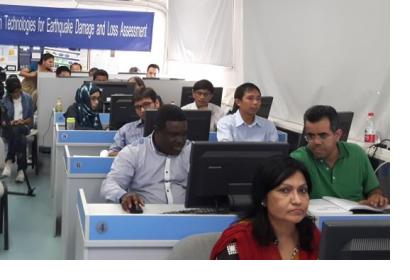From 17 to 22 September 2015, UNOOSA/UN-SPIDER organised a training programme on ‘Earth observation technologies for earthquake damage assessment’ jointly with the National Disaster Reduction Center of China (NDRCC), Asia Pacific Space Cooperation Organisation (APSCO) and Regional Centre for Space Science and Technology Education in Asia and the Pacific (China) (affiliated to the United Nations). This training was an extended event back to back with the United Nations International Conference on Space-based Technologies for Disaster Management - "A consolidating role in the implementation of the Sendai Framework for Disaster Risk Reduction: 2015-2030 “ which was successfully organised from 14 to 16 September 2015 and several participants stayed back after the conference to attend the training programme.
The aim of the training was to make participants conversant with the use of Earth observation in disaster management in general and assessing earthquake damage in particular. The training resulted in imparting skills to identify damaged infrastructure and learn about the methodology of damage assessment using integrated Earth observation technology. The training was conducted by the experts from International Centre for Integrated Mountain Development (ICIMOD), UN-SPIDER, Indian Space Research Organisation (ISRO), DigitalGlobe and NDRCC. The training covered various topics such as 1) Basics of earth observation for earthquake damage assessment 2) Lessons learned from Nepal earthquake response and recovery - Earth Observation perspective 3) Ways to quick access and process high resolution images during disasters –First Look and Tomnod Crowdsourcing platform 4) Rapid information extraction from high resolution satellite images and 5) Earthquake emergency response mapping.
A total of 30 participants from 14 countries’ disaster management agencies and stakeholder departments participated in the training programme.

